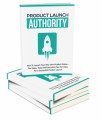Salespage Snapshot

Table of Contents
Introduction….3
Chapter 1: Quiet Your Mind And Focus…..5
Chapter 2: Basic Ingredients Of Productivity……7
Chapter 3: How To Measure Productivity..9
Chapter 4: Start Laying A Productive Foundation……12
Chapter 5: Implement Simple Time Management Techniques…..14
Chapter 6: Removing The Unimportant Tasks..17
Chapter 7: Pursue An All-Around Productive Life…..19
Conclusion….20
Sample Content Preview
Chapter 2: Basic Ingredients Of Productivity
In the last chapter, you learned the importance of clearing your mind and focusing on the task at hand, and ONLY on the task at hand. Letting your mind wander and having your focus diverted to other matters, tasks, and/or issues will lead to lower productivity and a greater chance of errors impacting your work. In this chapter, you will learn the basic ingredients of productivity and how they can aid you in increasing your productivity.
The three basic ingredients of productivity are time, energy, andattention. According to Chris Bailey’s The Productivity Project: Accomplishing More by Managing Your Time, Attention, and Energy, we can work smarter by managing our time, energy, and attention better. All three ingredients interrelate to each other andare vital to boosting our productivity to its maximum capacity and getting the most done in the least amount of time possible.
For instance, if you don’t manage your time wisely, it won’t matter how much energy and focus you have to do your work; you won’t get as much done because your time management is poor. If you can’t focus on the task at hand, it won’t matter how much time or energy you have because you won’t be able to accomplish tasks in a timely manner, leading to lower productivity. If you don’t have the energy necessary to complete the tasks at a high level in a timely manner, it will not matter how much time you have and how much effort you put into your work, as you just won’t have the energy to complete the tasks at a high level in a timelymanner. In other words, your productivity will be lower than it can be.
This is why all three ingredients of productivity are vital to completing the most work at the highest level in the least amount of time possible. If you don’t have good time management skills, you are procrastinating and not getting as much done as you should. If you can’t focus on the task at hand, you’re distracted and less productive, plus you’re likelier to make mistakes in your work, leading to even less production. If you don’t have the energy necessary to complete the tasks at a high level, you’ll burn yourself out, your work will suffer, and you’ll be less productive.
This is why you need to remain focused on the task at hand-so you complete the tasks in the least amountof time possible so you can manage your time better and get the most done in the least amount of time possible. This is why it’s vital you clear your mind and only focus on the task at hand to improve your attention span. This is why you get the 7-9 hours of needed rest in order to have the energy level in order to complete your tasks at a high level in the least amount of time possible. In this chapter, you have learned that the three ingredients of productivity are time, attention, and energy. You have learned that all of these ingredients of productivity are needed for you to achieve your highest level of productivity, get the most work done in the least amount of time, accomplish the most goals you can, and have the greatest success possible. Without all three ingredients, your productivity will be lower than it can be, and you won’t achieve the amount of success you are expecting.
In the next chapter, you will learn how to measure productivity so that you can improve your productivity and get more done in less time.
Chapter 3: How To Measure Productivity
In the last chapter, you learned about the three ingredients of productivity and why it is vital to have all three ingredients to gain the greatest level of productivity you can achieve. In this chapter, you will learn how to measure productivity so that you can improve your production and achieve more of your goals in the least amount of time possible.
Dictionary.com defines productivity as “the quality, state, or fact of being able to generate, create, enhance, or bring forth goods and services.” Its definition in regards to economic is similar: “The rate at which goods and services having exchange value are brought forth or produced.”
Labor productivity is defined as “the output volume divided by the labor input use.” In other words, its the amount of effort and time that the worker puts in and how many units of production he/she produces in that time span. If a worker produces one unit (say, one ebook) an hour and another worker produces two units (say, two ebooks) in one hour, then the second worker is two times more productive than the first worker.
This means that the second worker is able to utilize the same amount of time to produce two times the amount of material/product. This means he/she is more efficient and more productive because he/she is better able to manage his/her time, focus his/her attention on the tasks required, and/or utilize the energy necessary to complete the tasks required in that time period as compared to the first worker.
Therefore, in order to boost your productivity, you need to be able to produce more of the product or provide more of the service you deliver in the same amount of time or less than you have before. As mentioned above, if you produced one ebook an hour, you’ll be more productive if you can produce two ebooks an hour. You’ll have two products you can sell in one hour instead of just one product, even if the amount of pages total between the two books is the same as the one book from before. Of course, if you can produce two books of the same length as the first ebook in one hour, that’s even better.
When it comes to businesses, though, it’s not just your production, but the production of your workers who work for you. Whether that’s a traditional business such as a brick-and-mortar business or an online business where you use outsourcers to produce content and products and/or provide services for you, you have to measure their productivity as well as part of your overall productivity.
Therefore, if you can produce one to two ebooks per hour yourself, and they can add another one to two ebooks per hour themselves, you have that many ebooks in one hour. For instance, if you have five outsourcers producing two ebooks an hour each, and you can produce two ebooks per hour yourself, you have twelve ebooks produced in one hour. That’s six times the amount you can produce on your own, which means that you have six times the productivity as before. However, if one of your outsourcers can produce three ebooks per hour, while the other four outsourcers can produce two ebooks per hour and you can produce two ebooks per hour, then you have 13 ebooks per hour you can sell, or about 6% more productivity than before (13-12 = 1 more ebook/12 total ebooks before = 6%).
It’s similar in traditional brick-and-mortar businesses when you have several employees attempting to make sales of products inside the store. If one employee can sell five pairs of shoes in one hour, and you have five employees total that can sell five pairs of shoes in one hour, then your store will sell twenty-five pairs of shoes in one hour (5 x 5), which is five times more productive than just one employee can do. However, if one of those employees can sell ten pairs of shoes per hour, while the other four employees can each sell five pairs of shoes per hour, then your store can sell thirty pairs of shoes per hour ((1 X 10) + (4 x 5)), which means you have 20% more production than you did before (30-25 = 5 more shoes/25 total shoes before= 20%).
In this chapter, you learned that productivity is that it is the amount of effort and time that aworker puts in and how many units of production he/she produces in that time span.The more products produced or the more services rendered in that time span, the more productive that worker is. The more workers that can provide more products or that can render more services, the more productive the business is. In the next chapter, you will learn how to start laying a productive foundation to improve your productivity and your success.
Other Details- 20 Articles (TXT, DOC)
- 1 Ebook (PDF), 21 Pages
- 3 Graphics (PNG)
- 1 Salespage (HTML)
- 3 Promotional Ad Materials (Emails)
- Checklist, Resource, Mindmap, Social Media Images
- Year Released/Circulated: 2017
- File Size: 9,073 KB
License Details:
[YES] Report can be given away free
[YES] Can be offered as a bonus
[YES] Can edit the included opt-in pages
[YES] Can be added to a PAID membership site
[YES] Can sell and keep 100% of the profits
[YES] Can resell with Basic Resell Rights ONLY
[YES] You agree to handle any support issues for this product
[NO] May not give away or resell these same rights
[NO] Title and contents cannot be edited
[NO] You DO NOT have Private Label Rights to this product














